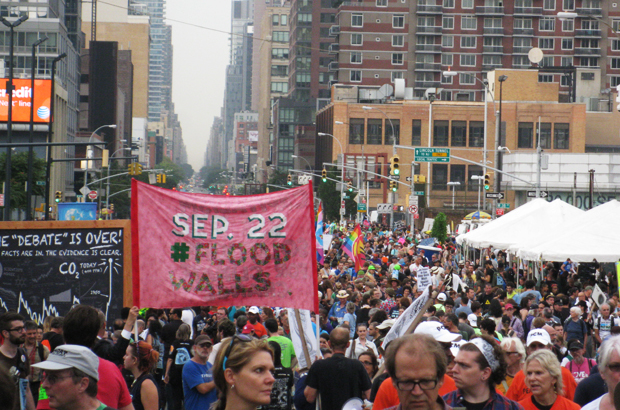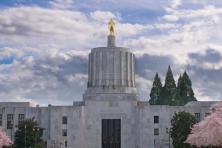About a dozen board members, staff and volunteers from Climate Solutions traveled to New York for the People’s Climate March on Sept. 21, 2014: the largest demonstration for climate action to date. A few of them shared their impressions of this historic occasion.
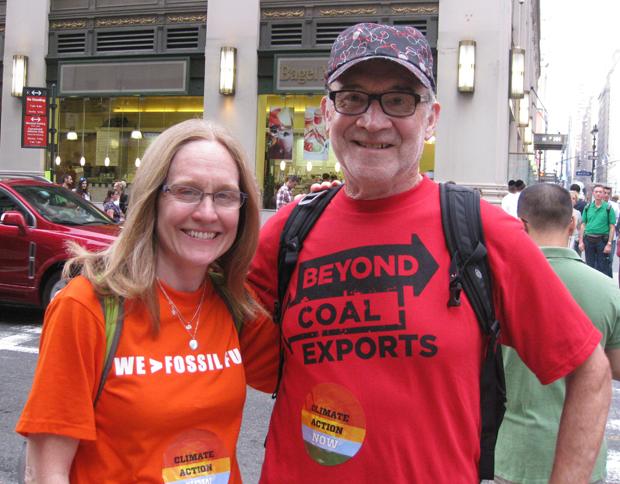
ROSEMARY C.. QUIGLEY
Eileen Quigley (Climate Solutions) with Bill Donnelly
From sound of silence to rallying cry
The People’s Climate March organizers had scheduled two minutes of silence from 12:58 to 1:00 p.m., in honor of those most impacted by climate change. The silence was to be broken by ringing the “climate alarm,” at which point the crowd was to make as much noise as possible.
I was skeptical whether they’d be able to pull this off. Demonstrators are known for questioning authority, and Manhattan is not a place known for quiet.
Our contingent was stationed two-thirds of the way back in the line-up for the march, and had not yet begun to move when the time came to be silent. A wave of hands rising ahead of us signaled quiet, and immediately a hush descended. The only sound was a police helicopter hovering above Central Park. The total absence of speech amid such a large crowd was both eerie and exceptionally moving.
Two minutes can be a long time, and the silence made it feel even longer. Then we started to hear a cheer in the distance, from the direction of Columbus Circle, at the official starting line about a quarter of a million people ahead of us.
The noise grew louder as the crowd began to roar, a sound that undulated northwards up the avenue, rippling to a crescendo—a clarion cry of people from all walks of life heading into battle, determined to force meaningful action on climate change.
We are all impacted by climate change in different ways, and we each have something different we can do about it, but we share an atmosphere and a planet in common, and climate change touches us all. By the same token, I’ve spoken with scores of people who were at the march, and we each had distinct recollections of the day, depending on who walked beside us for those few miles. But we all shared the wave of sound and I haven’t met a marcher who doesn’t mention how profoundly that collective experience affected them.
— Eileen V. Quigley
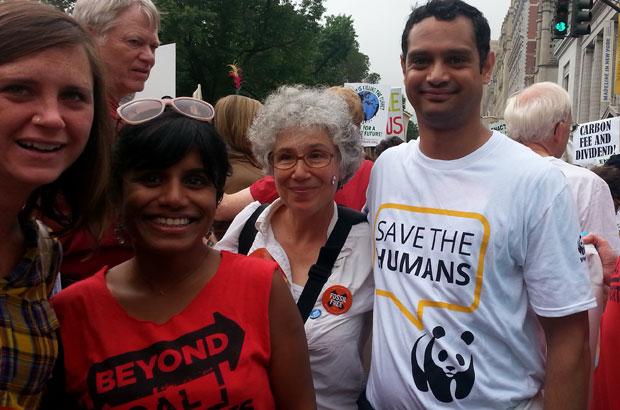
EILEEN V. QUIGLEY
Kelly Hall, Savitha Pathi and Rachel Lodge (Climate Solutions), Sameer Ranade (Washington Environmental Council), ready to march
Climate is about the spirit for me, too
I’m coming back to Seattle with a big white rock.
After the climate march, I was headed back uptown to my friends’ place, but I took their advice not to skip the interfaith service at the Cathedral of St. John the Divine.
I walked into one of the most beautiful churches I've ever seen, where I was handed a rock and was told that these stones signified our commitment to Mother Earth and would be incorporated into the service.
The church was packed with people of all ages and faiths, with guests and speakers squeezed side by side into a circular seating plan. The speakers who stood to share their remarks were tribal leaders, Eskimo elders, young women from the Himalayas, spiritual leaders from the world's major religions. Author Terry Tempest Williams' prose brought the crowd to its feet. Dr. Vandana Shiva reminded us that the term "tree-hugger" is from activist women in India years ago. Former VP Al Gore quoted Martin Luther King, Jr. in a church where he spoke during the civil rights movement.
Speaker after speaker talked about their commitment to Mother Earth and put their stones on an altar in the middle of the circle as a symbol of this commitment. Guests were asked to do the same during musical interludes.
I’d come to the march as a woman of color and a tree-hugger from the Northwest who considers climate change the biggest social justice and equity issue of our lifetime. Though I'm a Hindu, I didn't realize I was also at the march as a person of faith.
But in the cathedral, I realized for the first time my spiritual and religious connection to the issue of climate change — that working every day to help address this issue is rooted in this belief of being respectful to the planet and what we have been given as people of all faiths (or no faiths.)
In the words of Archbishop Desmond Tutu, this is a moral movement. So many times, those who are religious are stereotyped as being climate deniers. This is the complete opposite of what I've experienced in my work at Climate Solutions. The faith community is a key partner, and these allies were out in full force on Sunday and the thousands of events around the world. But until that moment, I hadn’t realized I was part of that group.
I didn't leave my stone of commitment on the altar. I'm bringing it back with me to Seattle as a reminder of my Sunday at the march in New York and the church service afterwards and as a symbol of my commitment to the issue of climate change and the moral, spiritual and religious connection I feel to this work.
— Savitha Pathi
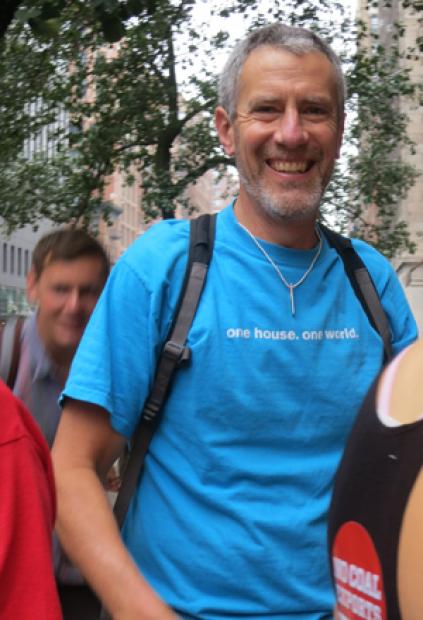
EILEEN V. QUIGLEY
KC Golden (Climate Solutions)
A kink in the arc
Twenty years from now, the “arc of the moral universe” – the path to real climate solutions, for everyone — will be easier to trace. Until then, it will be hard to locate our daily quest for solutions on that path, hard to know exactly where it is leading. We’ll have more than a few occasions to wonder, “Where is that arc?!?”
But when we crest the hill, we’ll be able to look back and see a pronounced kink in our path, a point of inflection, at Columbus Circle, at 59th and Central Park West in New York City.
That was the official starting line for the People’s Climate March, on September 21, 2014. It’s where hundreds of thousands of people lined up to begin the march. Some marchers waited in line for four hours to reach that point. Others of us had been waiting for 25 years.
It’s where the people most directly and profoundly affected by the climate crisis – frontline communities, indigenous people, environmental justice advocates – went to the head of the line to lead the movement, right under the statue of Christopher Columbus.
It’s where the marchers behind them were blocked to allow a huge rally of working families and organized labor to merge into the march, many thousands strong, sleeves rolled up to build the clean energy future.
It’s where hundreds of thousands passed, taking 2 billion human steps in the right direction, turning together around Columbus Circle.
We didn’t crest the hill last Sunday. That day still seems dishearteningly distant – though history shows that it’s very hard to glimpse the crest until you’re on it.
But we turned. Visibly. Together in a way we’ve never yet been.
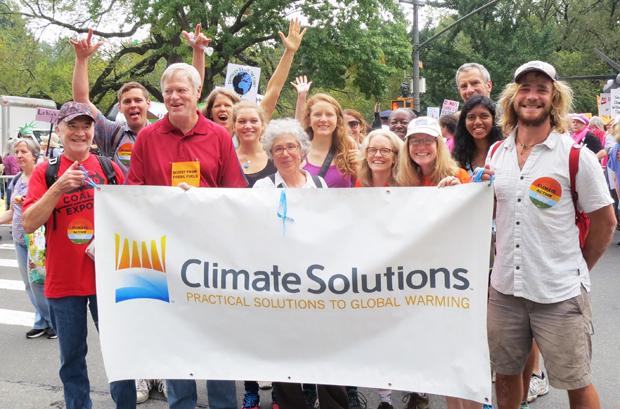
EILEEN V. QUIGLEY
— KC Golden
